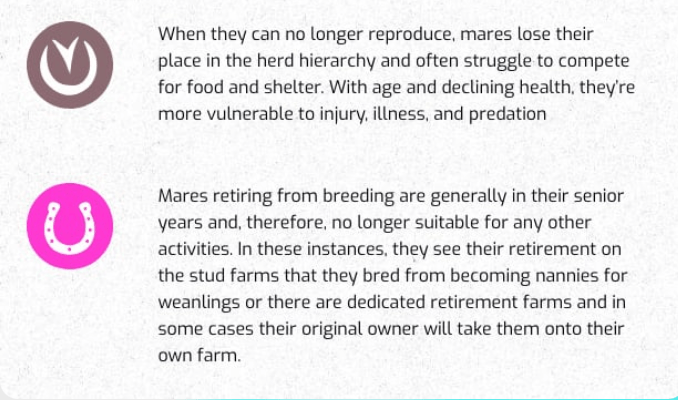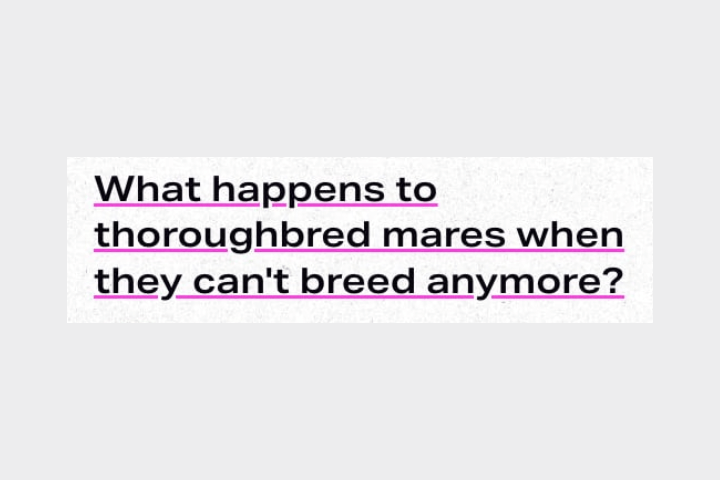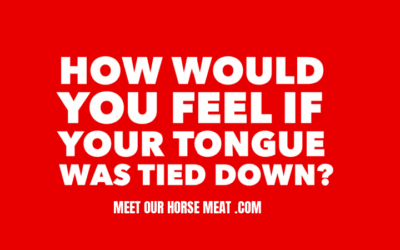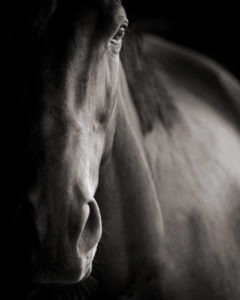THE HORSE RACING INDUSTRY WOULD LIKE YOU TO BELIEVE…

WHAT REALLY HAPPENS TO BROODMARES IN THE AUSTRALIAN RACING INDUSTRY?
It’s a comfortable lie racing fans tell themselves — that broodmares, once they’ve finished churning out foals for the industry, are retired to lush green paddocks where they live out their golden years in peace.
But it’s just that: a lie.
Because if young, healthy racehorses are being routinely killed, and if Group 1 winners with six-figure earnings are showing up at slaughterhouses, why would anyone honestly believe that aging, no-longer-fertile broodmares are getting a better deal?
The truth is brutal: when horses in racing and breeding lose their economic value, they are often discarded like trash.
The industry’s own language betrays its mindset — these animals are labeled “wastage.”
And nowhere is that more evident than in what happens to broodmares.
The ABC’s 2019 “7.30” investigation – The Final Race — into the Australian racing industry was a turning point.
It revealed that more than 4,000 thoroughbreds a year — many of them ex-racehorses and broodmares — were being slaughtered at knackeries across Australia.
Hidden camera footage from Meramist Abattoir in Queensland showed racehorses being violently handled and killed — some of whom had won hundreds of thousands in prize money.
Source: ABC News “The Final Race”
Among those killed were mares listed in breeding registries, according to Racing Australia’s own data, which showed that 56% of horses leaving the racing industry each year were “unaccounted for” — disappearing from official records without any transparency about their fate.
Source: Coalition for the Protection of Racehorses (CPR) Annual Wastage Reports
In 2022, CPR identified retired broodmares from the Hunter Valley — the heart of Australia’s thoroughbred breeding industry — showing up at Echuca and Laidley sales, known slaughter pathways. Photos and microchip scans confirmed their identities. One mare had foaled six live offspring and was still sent to auction with no reserve.
Even elite breeding operations are not exempt. In 2023, footage emerged of mares from large-scale stud farms being sold to dealers who routinely ship to slaughter.
CPR and volunteers have documented these horses being quietly dumped — their previous life erased the moment they no longer served a financial purpose.
THE RACING INDUSTRY’S HYPOCRISY
Let’s be clear: these are not isolated incidents. These are systemic patterns. And they reveal a truth that racing fans and breeders want to ignore — that once a horse, mare or stallion, stops being profitable, their life hangs by a thread.
It’s not just “unsuccessful” racehorses either. Horses with stellar records have ended up in the kill line.
The idea that a broodmare — whose reproductive career is over, who may have medical issues, who costs money to feed — would be spared, is naive at best and dishonest at worst.
If the industry won’t take responsibility for keeping young horses safe — if it allows champions to be discarded — why would anyone believe it makes room for aged broodmares with no future income potential?
SO WHERE ARE THEY?
Racing fans say they’re “turned out to pasture.”
Okay. Show us the pastures.
Where are the thousands of broodmares no longer producing foals each year?
Who is feeding them, vetting them, caring for their worn-out bodies?
Because no national retirement database tracks them.
No industry-wide sanctuary program exists to support them.
And no accountability is enforced to ensure they don’t end up in the kill pen.
But we can show you where they’ve gone.
We can show you mares with names, brands, and bloodlines… at saleyards, on slaughterhouse kill lists, in the back of transport trucks bound for death.
And unless real reform happens — unless laws are passed and enforced to protect horses after their “usefulness” ends — broodmares and other horses will keep being shipped to slaughter.

While the industry lies and deflects, we’ve been doing the work—buying horses at auction before the kill buyers (aka doggers) get their hands on them.
Horses that the racing world discarded like trash.
We’ve seen the tags.
We’ve seen the fear in their eyes. And we’ve paid the price—literally—to get them out alive.
So don’t talk to us about what “doesn’t happen.”
We know exactly what happens.
Because we’ve been there.
We’ve saved many.
#MOHM NEEDS YOUR HELP!
We’ve been threatened by those in the horse racing industry and those who benefit from horse slaughter more times than we can count.
But we are not going away.
We are going to persist until horse slaughter no longer exists for any purpose within Australia -- and until the horse racing industry makes drastic changes.
We are going to continue our hands-on work to offer lifelong sanctuary to as many horses as possible. We generally have 20 at just one of our locations - at any given time.
We have the acreage to take on more horses as financial support allows.
BARBARIC TONGUE TIES
YET ANOTHER HORSE RACING DIRTY LITTLE SECRETTongue Ties Are Still Legal — and Still Barbaric.In an industry obsessed with speed, profit, and control, the welfare of the horse is often an afterthought. Case in point? Tongue ties. These crude devices — usually rubber...
BONNY
HOW MOHM GOT STARTEDThis is not only the story of how the founder of Meet Our Horse Meat got started rescuing horses - it's also an example of why we love the power of social media and 'keyboard warriors'.Bonny’s life changed because of one simple comment on social...










